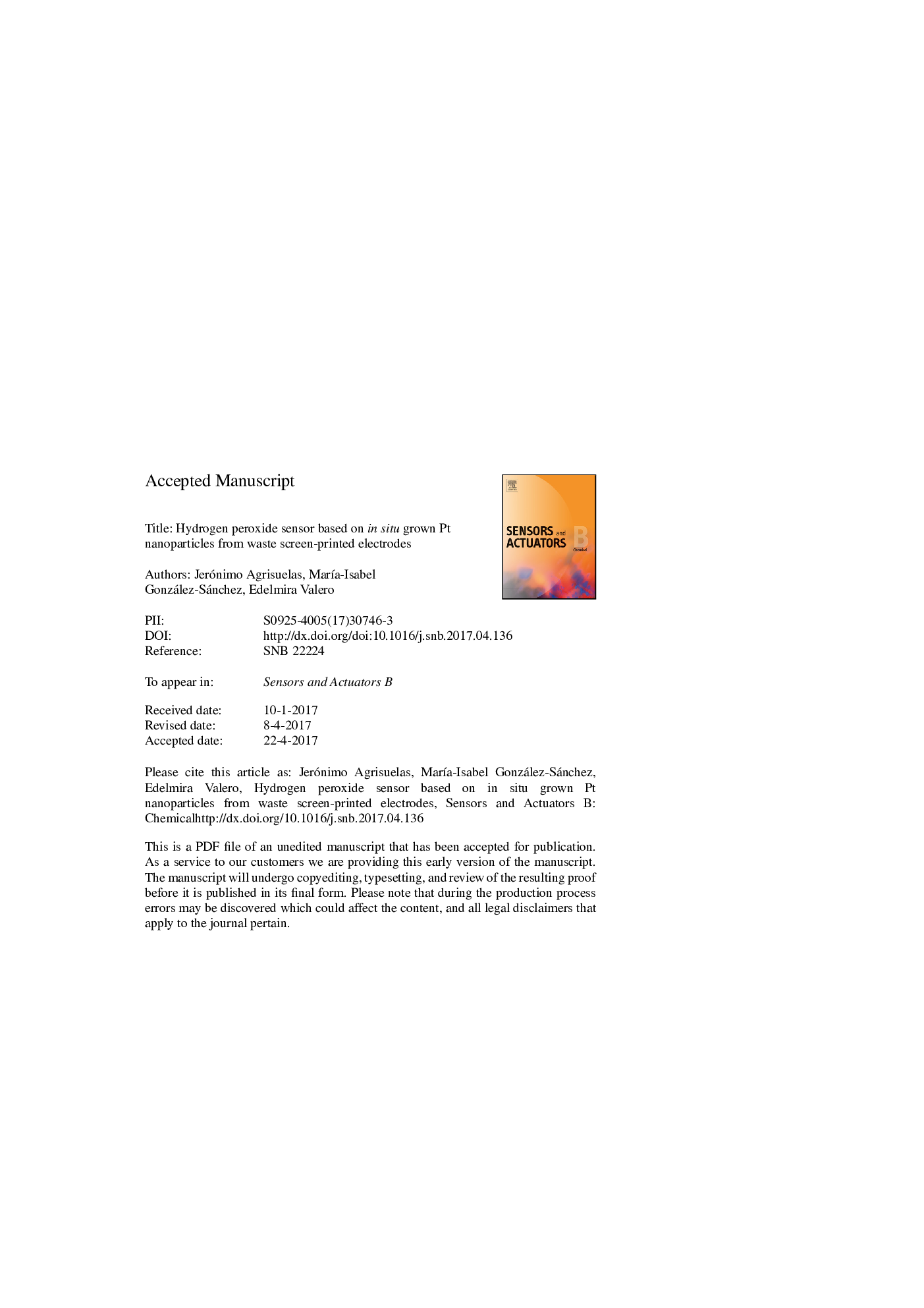| کد مقاله | کد نشریه | سال انتشار | مقاله انگلیسی | نسخه تمام متن |
|---|---|---|---|---|
| 5009307 | 1462042 | 2017 | 24 صفحه PDF | دانلود رایگان |
عنوان انگلیسی مقاله ISI
Hydrogen peroxide sensor based on in situ grown Pt nanoparticles from waste screen-printed electrodes
دانلود مقاله + سفارش ترجمه
دانلود مقاله ISI انگلیسی
رایگان برای ایرانیان
کلمات کلیدی
SPCEsPtNPsLSVSPES - HOPEFRA - ازElectrodeposition - الکترودScreen-printed electrodes - الکترود چاپ شده روی صفحهScreen-printed carbon electrodes - الکترودهای کربن روی صفحه نمایشRecycling - بازیافتphosphate buffer - بافر فسفاتEIS - تثبیت کننده الکترونیکی تصویر یا EISLOD یا Limit of detection - حد تشخیصHydrogen peroxide sensor - حسگر پراکسید هیدروژنElectrochemical impedance spectroscopy - طیف سنجی امپدانس الکتروشیمیاییlimit of detection - محدودیت تشخیصSEM - مدل معادلات ساختاری / میکروسکوپ الکترونی روبشیscanning electron microscope - میکروسکوپ الکترونی اسکنPlatinum nanoparticles - نانوذرات پلاتینS/N ratio - نسبت S / NSignal-to-noise ratio - نسبت سیگنال به نویزLinear sweep voltammetry - ولتاژ سنجش ولتاژ خطی
موضوعات مرتبط
مهندسی و علوم پایه
شیمی
شیمی آنالیزی یا شیمی تجزیه
پیش نمایش صفحه اول مقاله

چکیده انگلیسی
Screen printing technology is widely used for the fabrication of low-cost disposable electrodes. However, this generates solid wastes that contain precious metals like platinum, which is highly polluting and quite valuable for different industries. Therefore, it is necessary to process spent platinum-containing materials to meet future demand and to protect resources. This work presents, for the first time, a procedure to recycle platinum from waste screen-printed electrodes using aqua regia as the leaching solution. Platinum from this solution was electrodeposited as nanoparticles onto the surface of screen-printed carbon electrodes (PtNPs@SPCEs) directly. PtNPs were characterized by SEM and X-ray diffraction analyses. PtNPs@SPCEs were applied as a hydrogen peroxide sensor, with similar results to those obtained with PtNPs from standard hexachloroplatinic acid solutions. With very small quantities of deposited platinum (μg), the reached sensitivity of the PtNPs@SPCEs was 687.3 nA cmâ2 μMâ1 and the limit of detection was 1.9 μM (based on a S/N ratio = 3). The sensitivity towards H2O2 was improved â¼360 times compared to commercial SPCEs, and â¼7 times compared to commercial screen-printed platinum electrodes.
ناشر
Database: Elsevier - ScienceDirect (ساینس دایرکت)
Journal: Sensors and Actuators B: Chemical - Volume 249, October 2017, Pages 499-505
Journal: Sensors and Actuators B: Chemical - Volume 249, October 2017, Pages 499-505
نویسندگان
Jerónimo Agrisuelas, MarÃa-Isabel González-Sánchez, Edelmira Valero,